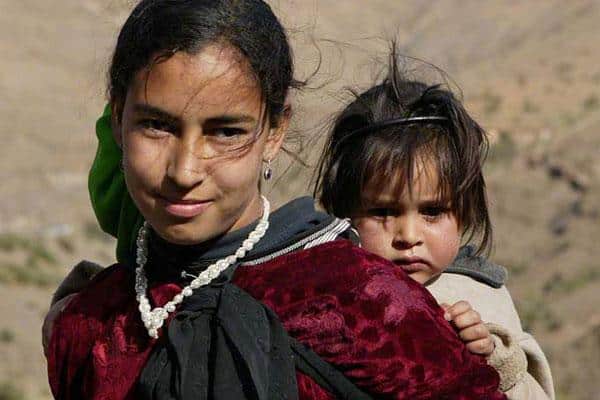[dropcap]C[/dropcap]hild marriage was banned in Morocco in 2004, however, there is a legal hole based on the Religious Marriage that is constantly perpetuating this reality. Nevertheless, it seems that certain progress in this realm 2 is happening, as the cases of child marriages are dropping year after year, in 2004 it was about 55,379 Moroccan girls getting married under 18 while in 2014 the number dropped until 48,291 (Moroccan High Commission of Planning). In order to understand better the evolution of the problem, we have analyzed it under the two-step flow theory, assuming that what pushes this relative progress is not so much the media, as its influence is limited, while it is more about the environment and the interpersonal relations. Focusing our attention in certain opinion leaders of the High Atlas region, those that having access to mass media information, have influenced and impact certain sectors of the community.
[ads2]
In order to develop further this idea, we have first analyzed the roots of child marriage and its continuity, differentiating between three main agents; Primary agents (family and friends), Secondary agents (education and mass media) and Agents of reference (opinion leaders). The High Atlas of Morocco is about rural areas with Amazigh communities as its inhabitants, many of them finding themselves in a situation of poverty practicing an economy of subsistence, a region and a minority that has been historically neglected; no electrical current until 2008, lack of infrastructures nor services, bad communication networks…Under this scenario based on disinformation, the continuity of child marriage was likely to happen.
[dropcap][/dropcap]A 15-year-old girl, in a situation of poverty, without having access to information, will receive the impact of her family as a primary agent, considering that getting married with the rich 35 year-old-man of the town would give her security, protection and economic stability. This first cultural pattern will be reinforced at the moment that she notices that other girls of the town are taking the same path that she is supposed to take (primary agent). Obviously, secondary agents of influence as education, will also play an essential role; an educational system inspired in the patriarchal values, as the images of the text books just portray women as housewives, while those going to the university are male, assuming that this is what she is supposed to do. Under such a scenario the girl engages into marriage, arriving to her adulthood and believing that this is the real path.
[ads2]
Once we have understood the process, the two-step theory can be clearly noticed; in a region that has almost non-access to media, a positive change has happened, why? Media is limited, and what really has promoted that change have been the interpersonal relations with opinion leaders (agents of reference). If those actors that have access to media, knowing how to engage in it arising with critical thinking, are at the same time, the ones that are maintaining any kind of relation with the Amazigh community, changes can happen.
For example, in the rural township of Imilchil (Province of Midelt) a group of students of the University of Meknes have arisen with Akhiam, an association with its headquarters in Agoudal, promoting the development of that region, including many projects based on direct contact with the women. At that point, consciousness is arisen among family mothers, the ones that when it comes to think about the future of their daughters, may consider an education as the most favorable path. A similar tendency is given in the childhood frame, Hayat Outamma, a teacher in the Primary School of Bouzmou explained us that at school they organize some projects in order to arise consciousness among girls engaging them to continue studying.
[ads2]
In conclusion, these both cases portray clearly the essence of the two-step flow theory: in a community that has almost non-access to media nor information, progress is giving due to direct interpersonal relations with opinion leaders as the members of Akhiam or teachers as Hayat Outamma. The limited influence of media can be clearly noticed, despite that, the strength of interpersonal relations is a reality, a reality that impulse significant changes towards a more equal world system.
The views expressed in this article are the author’s own and do not necessarily reflect Amazigh World News’ editorial views.

